
When people ask what we at Mile High Card Company do for a living, we usually tell them, “Same thing we did in 6th grade, play with baseball cards!” Obviously it’s a quite a bit more complicated than that, but with all the hard work and dedication we put into consistently producing one of the finest auctions in the hobby, we still marvel at the quality of material that passes through our doors, whether it’s something we’ve seen over and over or a rare piece surfacing for the first time. Sadly, there are those in this industry that look at sports cards as merely a means to make a living, seeing just little pieces of cardboard encased in plastic to be bought and sold for profit. And while what we do won’t cure a wasting disease or solve the plight of hunger or global conflict, we do have a passion for the hobby that drives us to deliver a first-rate catalog time after time, presenting auction material the way we’d want it to be presented if we were the consignor. So as our new catalog auction gears up to begin on October 24th, we thought we’d share our “Staff Picks.” Presenting our favorite Topps sets:
Brian Drent – President and CEO: 1952 Topps
A traditionalist through and through! If you ever had a sit-down with Brian and just discussed baseball cards, you’d see that he sounds more like a collector than an auctioneer. I expected Brian to pick this set for two reasons: respect for its importance to the hobby and the challenge of building it in high grade. There are so many layers to the ’52 Topps set that it’s almost a separate hobby within the hobby. Of course, there’s the Mickey Mantle card, the lead issue of the enigmatic high-number series, a 97-card collection that has its own folklore. Then there’s the “why him?” card #1 Andy Pafko, the handful of commons that are inexplicably difficult to find in high-grade, and the back variations of the low series that make the 1952 Topps set seem like a dysfunctional family that somehow manages to get along perfectly when sitting around the dinner table at Thanksgiving. It’s easy to pick the ’52 set just for the Mantle, but there are so many other reasons as well!
Ben Gassaway – Auction Coordinator: 1953 Topps
I was a little surprised that Ben chose the 1953 Topps set, but I can understand why. Sure, the 1952 set gets most of the accolades as the inaugural issue and the birthplace of the iconic Mickey Mantle card, but if we’re really being honest with ourselves, there’s no better assemblage for sheer aesthetics than the ’53 series. The intricate detail of the player depictions on each card far surpasses the quality of the 1952 set, right down to the advertising on the outfield fences in the backdrop of most issues. While it doesn’t carry the financial swagger of the ’52 set with virtually all of the potential for key rookie issues gobbled up by the premier series, the ’53 set is easier to build in high-grade than its predecessor, has a tough but not crazy-hard high-number series, a smaller 274-card size, and a smattering of short-prints that make life more interesting. Plus it’s got Mantle, Mays, J. Robinson, and the addition of a Satchel Paige card that are arguably the best looking issues ever produced for each player.
Mitch Rosenberg – Senior Writer: 1957 Topps
I might have gone with the 1955 set if not for one thing that’s unfortunately a deal-breaker: no Mickey Mantle card. But to me, the 1957 Topps set is the complete package. At 407 cards, it’s large enough to present a challenge but small enough so that you won’t have to lose your mind trying to find those last six cards to complete it. It’s the first Topps set with live, on-field shots that lend an authenticity to the series, as if you’re at the ballpark taking the photo yourself. It’s also loaded with great rookie cards of Hall of Famers: Drysdale, Mazeroski, Herzog, F. Robinson, B. Robinson and Bunning, in addition to the debut of Colavito, Richardson and Kubek. It’s got a tougher mid-series that provides a touch of card-collecting drama, a Mickey Mantle card that’s one of the best, and a “Yankee Power Hitters” card that closes out the collection in style. Yeah, if we were using today’s vernacular to sell this set, the slogan might be, “1957 Topps: it just got real!”
Kyle Boetel – Generalist: 1967 Topps
Though revered as the first set he ever collected as a kid, Kyle has plenty of great points as to why the 1967 Topps series is his favorite. Like the ’53 Bowman Color collection (his second choice), the ’67 Topps series offers amazingly bright and precise color photographs that far surpassed any that came before it. The 609-card series also features key rookie cards of Tom Seaver and Rod Carew with a high-numbers series filled with difficult but attainable cards in top grade. There are even a few quirky variation cards that are fun to collect if you can find them, and a classic portrait shot of Mickey Mantle against a baby-blue backdrop that many collectors think is his most attractive card of the decade. Unfortunately, his dog took a piece out of the Mantle card he owned as a kid, but these things happen.
Whatever drives your passion, we at Mile High Card Company will continue to do our best in helping you achieve you card-collecting goals with the same enthusiasm for presenting material as you have for collecting it. When that catalog hits our hands for the first time, as it will again very soon, we still feel that adrenaline rush, and we already know what’s in it! As long as we still approach our trade with the same excitement for each catalog as we did for our first, we’re gonna continue to offer the best material with the respect it deserves. Good luck and good bidding!













 Growing up on Long Island, my first recollection of baseball was in 1973, when my 3rd grade principal allowed the radio broadcast of the National League championship series to be played over the intercom for the last 20 minutes of the school day. I became a Mets fan. And it was exciting, because the Mets were really good, and they had Willie Mays! Except … he really wasn’t Willie Mays; he was a 42-year old part-time player who batted .221 and used to be Willie Mays. While guys like Mays, the real immortals of their sport, have earned the right to leave the game on their own terms, it’s always a little sad when they seem to hold on just a little too long and become a mere shell of what once was. Even the great Babe Ruth, still one of the best in the game at age 38, was relegated to a being a sideshow for the last place Boston Braves just two years later. When it comes to sports, or all aspects of life for that matter, Father Time remains undefeated. While many know when to hang it up, here are some of the greatest athletes from each sport that are in danger of “Willie Mays-ing” themselves:
Growing up on Long Island, my first recollection of baseball was in 1973, when my 3rd grade principal allowed the radio broadcast of the National League championship series to be played over the intercom for the last 20 minutes of the school day. I became a Mets fan. And it was exciting, because the Mets were really good, and they had Willie Mays! Except … he really wasn’t Willie Mays; he was a 42-year old part-time player who batted .221 and used to be Willie Mays. While guys like Mays, the real immortals of their sport, have earned the right to leave the game on their own terms, it’s always a little sad when they seem to hold on just a little too long and become a mere shell of what once was. Even the great Babe Ruth, still one of the best in the game at age 38, was relegated to a being a sideshow for the last place Boston Braves just two years later. When it comes to sports, or all aspects of life for that matter, Father Time remains undefeated. While many know when to hang it up, here are some of the greatest athletes from each sport that are in danger of “Willie Mays-ing” themselves: “The Black Mamba” had done it all! He’s won titles with Shaq, he’s won titles without Shaq, captured scoring titles and MVP awards, and appeared in 16 consecutive all-star games. But over the last 3 years, Kobe has learned the names of the people in the training room better than the ones on the court. Finally “healthy” at age 37, the once great Lakers are a joke and Kobe is the punch line. It’s understandable that Kobe didn’t want to go quietly into the night from the assortment of injuries that would afflict anyone who has spent more than half of his life on an NBA court. And Kobe certainly deserves the pomp and circumstance of the “farewell season” afforded the true greats of the game. But simply put, Kobe can’t find the basket anymore. Sure, he still averages 16 points per game, but his 32% shooting percentage (23% on three pointers) couldn’t get him a roster spot in the D-League these days. Yeah, you could say that Kobe was the Willie Mays of professional basketball … and still is.
“The Black Mamba” had done it all! He’s won titles with Shaq, he’s won titles without Shaq, captured scoring titles and MVP awards, and appeared in 16 consecutive all-star games. But over the last 3 years, Kobe has learned the names of the people in the training room better than the ones on the court. Finally “healthy” at age 37, the once great Lakers are a joke and Kobe is the punch line. It’s understandable that Kobe didn’t want to go quietly into the night from the assortment of injuries that would afflict anyone who has spent more than half of his life on an NBA court. And Kobe certainly deserves the pomp and circumstance of the “farewell season” afforded the true greats of the game. But simply put, Kobe can’t find the basket anymore. Sure, he still averages 16 points per game, but his 32% shooting percentage (23% on three pointers) couldn’t get him a roster spot in the D-League these days. Yeah, you could say that Kobe was the Willie Mays of professional basketball … and still is.
 He’s 43 years old and in his 23th NHL season, took a three year hiatus to play in Europe and ranks 4th all-time in goals and points scored. This season, he anchors the Florida Panthers’ top line and has 9 goals and 21 points in 28 games while positioning the Panthers to make a playoff run for only the 2nd time in the last 15 years. Never mind Jaromir, you keep playing!
He’s 43 years old and in his 23th NHL season, took a three year hiatus to play in Europe and ranks 4th all-time in goals and points scored. This season, he anchors the Florida Panthers’ top line and has 9 goals and 21 points in 28 games while positioning the Panthers to make a playoff run for only the 2nd time in the last 15 years. Never mind Jaromir, you keep playing!
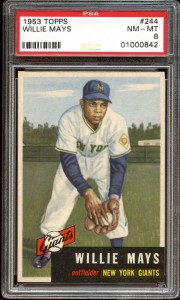
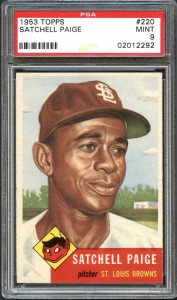
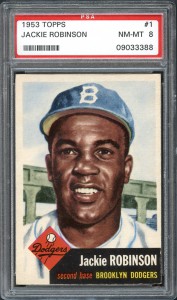
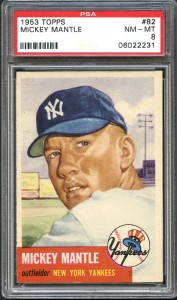
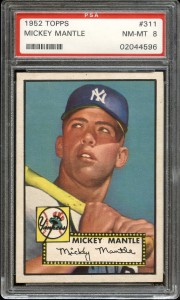
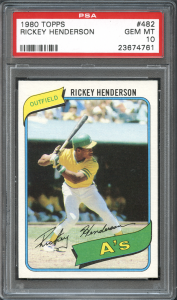
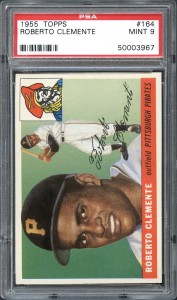
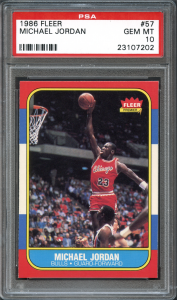
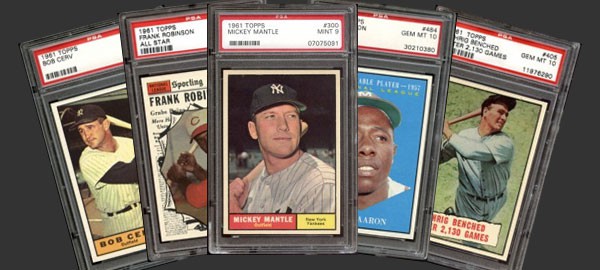
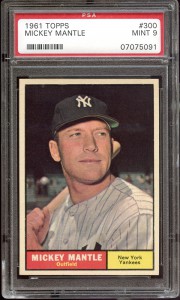 It was just 3 weeks into the start of a new year and America was inaugurating John F. Kennedy as its 35th President. World War II was long behind us but a new threat emerged from its aftermath, one that would leave our nation on edge for decades and change the culture of our society. In a time marked by unrest and uncertainty, the Topps Company released a 1961 baseball set that brought order to chaos.
It was just 3 weeks into the start of a new year and America was inaugurating John F. Kennedy as its 35th President. World War II was long behind us but a new threat emerged from its aftermath, one that would leave our nation on edge for decades and change the culture of our society. In a time marked by unrest and uncertainty, the Topps Company released a 1961 baseball set that brought order to chaos.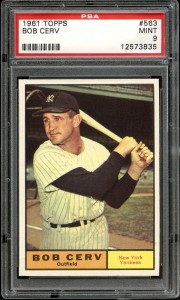
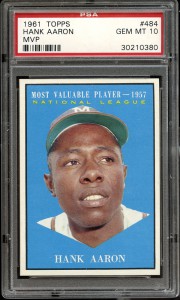
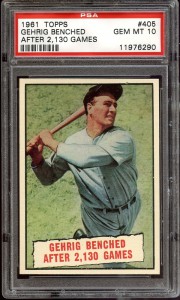
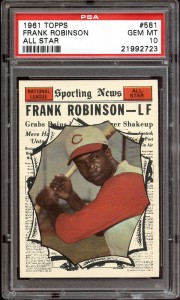
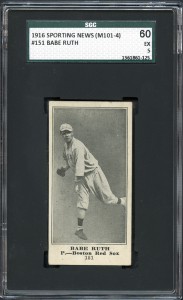 The most important rookie card ever produced!
The most important rookie card ever produced!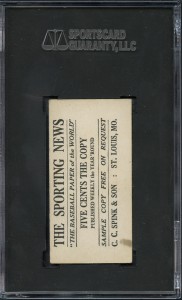 Offered is one of the most stunning, mid-grade M101-4 Sporting News Babe Ruth rookie cards in existence!
Offered is one of the most stunning, mid-grade M101-4 Sporting News Babe Ruth rookie cards in existence!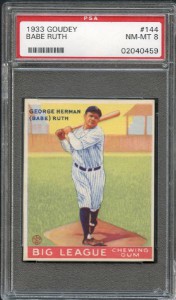
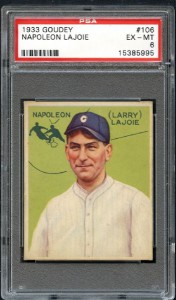 For an inaugural collection, the 1933 Goudey set initially appeared to have no “drama” other than a change to card #6 Jimmy Dykes, who was originally listed as 26 years old and later corrected to 36 years old. That is until collectors began to sense a common theme; they were all one card away from completing the set… and it was always the same card! While U.S. Caramel and George C. Miller had implemented a similar technique of short-printing one card so severely that only a few lucky patrons could complete the set, Goudey took the concept a step further by totally omitting card #106 completely, keeping customers buying their product in a futile search for the non-existent pasteboard. But it didn’t take long for Goudey’s subterfuge to be discovered and the missing card #106 was printed in the final run of the following year, explaining why it bears the design of Goudey’s 1934 product. It is unknown why Napoleon Lajoie, a star that had been retired for over 15 years, was made the subject of the missing pasteboard, but with the card produced in limited quantity and available only by mail to collectors that formally complained in writing, the “1933” Goudey #106 Lajoie ranks with the T206 Honus Wagner and the T206 Ty Cobb with “Ty Cobb” reverse as the most coveted rarities in sports card history.
For an inaugural collection, the 1933 Goudey set initially appeared to have no “drama” other than a change to card #6 Jimmy Dykes, who was originally listed as 26 years old and later corrected to 36 years old. That is until collectors began to sense a common theme; they were all one card away from completing the set… and it was always the same card! While U.S. Caramel and George C. Miller had implemented a similar technique of short-printing one card so severely that only a few lucky patrons could complete the set, Goudey took the concept a step further by totally omitting card #106 completely, keeping customers buying their product in a futile search for the non-existent pasteboard. But it didn’t take long for Goudey’s subterfuge to be discovered and the missing card #106 was printed in the final run of the following year, explaining why it bears the design of Goudey’s 1934 product. It is unknown why Napoleon Lajoie, a star that had been retired for over 15 years, was made the subject of the missing pasteboard, but with the card produced in limited quantity and available only by mail to collectors that formally complained in writing, the “1933” Goudey #106 Lajoie ranks with the T206 Honus Wagner and the T206 Ty Cobb with “Ty Cobb” reverse as the most coveted rarities in sports card history.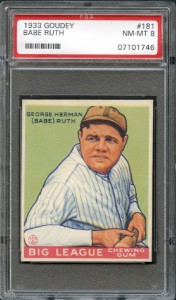
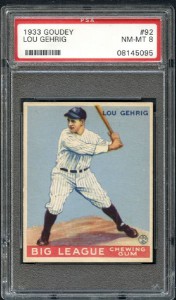
 First off, Mile High Card Company is pleased to announce its Fall catalog auction, which kicks off on Monday, November 17th and concludes on Wednesday, December 3rd. As MHCC traditionally does with their year-ending event, this auction has been limited to 577 total lots packed with a broad array of higher-caliber, one-of-a-kind items that include a 1911 Addie Joss Benefit Game Original Panoramic Photograph, the only known 1915 Boston Red Sox Ornate Silk Pillowcase Featuring Tris Speaker, sweet-spot signed baseballs of President Dwight D. Eisenhower and Roberto Clemente, and the finest known 1888 A35 Goodwin “Baseball Champions” Premium Round Album as well as spectacular GEM MINT PSA 10 rookie cards of 1957 Topps #24 Bill Mazeroski (1 of 1), 1965 Topps #16 Astros Rookies Joe Morgan (1 of 2), 1966 Topps #288 Dodgers Rookies Don Sutton (1 of 2), 1967 Topps #569 Rod Carew (1 of 1), 1951 Bowman #20 Tom Landry (1 of 2), 1976 Topps #148 Walter Payton and 1981 Topps #216 Joe Montana. MHCC is actively accepting consignments for our Spring auction; please call us at (303) 840-2784, write to us at mhcc@milehighcardco.com or visit us online at www.milehighcardco.com if you have any items you are interested in consigning.
First off, Mile High Card Company is pleased to announce its Fall catalog auction, which kicks off on Monday, November 17th and concludes on Wednesday, December 3rd. As MHCC traditionally does with their year-ending event, this auction has been limited to 577 total lots packed with a broad array of higher-caliber, one-of-a-kind items that include a 1911 Addie Joss Benefit Game Original Panoramic Photograph, the only known 1915 Boston Red Sox Ornate Silk Pillowcase Featuring Tris Speaker, sweet-spot signed baseballs of President Dwight D. Eisenhower and Roberto Clemente, and the finest known 1888 A35 Goodwin “Baseball Champions” Premium Round Album as well as spectacular GEM MINT PSA 10 rookie cards of 1957 Topps #24 Bill Mazeroski (1 of 1), 1965 Topps #16 Astros Rookies Joe Morgan (1 of 2), 1966 Topps #288 Dodgers Rookies Don Sutton (1 of 2), 1967 Topps #569 Rod Carew (1 of 1), 1951 Bowman #20 Tom Landry (1 of 2), 1976 Topps #148 Walter Payton and 1981 Topps #216 Joe Montana. MHCC is actively accepting consignments for our Spring auction; please call us at (303) 840-2784, write to us at mhcc@milehighcardco.com or visit us online at www.milehighcardco.com if you have any items you are interested in consigning. Brett Favre was a bad man! A grisly curmudgeon who mastered his craft in the heart of Dixie, the only thing stronger than the bazooka hanging from his right shoulder was the mean streak lingering in his mind. Yeah, Favre was a tough gunslinger who refused to accept losing and wanted to make you pay the price for being foolish enough to challenge him. Packing one of the strongest arms in NFL history, Farve believed a throw didn’t exist that he couldn’t make and brazenly fired laser-like passes through tight windows that no other QB could match. On those rare occasions when Farve came up short, it only fueled his desire to crush the next challenger. After 20 NFL seasons, the only loss on his resume was to undefeated father time, and he gave that battle a pretty good run for the money. Unable to accept that his best days were behind him, coming out of retirement several times, even the great Brett Farve eventually had to accept, at age 41, that the arm was no longer able to do what the head wanted. He still holds the NFL all-time record for passes attempted, passes completed and passing yards.
Brett Favre was a bad man! A grisly curmudgeon who mastered his craft in the heart of Dixie, the only thing stronger than the bazooka hanging from his right shoulder was the mean streak lingering in his mind. Yeah, Favre was a tough gunslinger who refused to accept losing and wanted to make you pay the price for being foolish enough to challenge him. Packing one of the strongest arms in NFL history, Farve believed a throw didn’t exist that he couldn’t make and brazenly fired laser-like passes through tight windows that no other QB could match. On those rare occasions when Farve came up short, it only fueled his desire to crush the next challenger. After 20 NFL seasons, the only loss on his resume was to undefeated father time, and he gave that battle a pretty good run for the money. Unable to accept that his best days were behind him, coming out of retirement several times, even the great Brett Farve eventually had to accept, at age 41, that the arm was no longer able to do what the head wanted. He still holds the NFL all-time record for passes attempted, passes completed and passing yards. Manning? No, he’s no gunslinger. Peyton Manning is a time traveler … and he lives one second ahead of his opponent. His coded non-sequiturs and comical gyrations before each snap are the product of a painful reality … he knows things! Within that bulbous noggin is a library of football experience, instantly recalled at the mere sight of a defensive formation. Where Farve used brute force to overpower the opposition, Manning instantly calculates a weakness and exploits it. Manning never threw rifle passes, and four neck surgeries have left the 38 year old signal-caller with a very average arm. But while strength is no longer his friend, he’s discovered a more powerful ally … timing. Broncos fans often cringe as his floating passes wobble like a wounded bird, yet land safely in the hands of a teammate almost 70% of the time. Executing an offense that perfectly suits his skill set and wealth of knowledge, the Canton-bound leader has raised his performance to unprecedented levels. Perhaps it’s a fitting tribute to both men that Brett Favre’s all-time TD passing record was eclipsed by such an equally iconic passer as Peyton Manning.
Manning? No, he’s no gunslinger. Peyton Manning is a time traveler … and he lives one second ahead of his opponent. His coded non-sequiturs and comical gyrations before each snap are the product of a painful reality … he knows things! Within that bulbous noggin is a library of football experience, instantly recalled at the mere sight of a defensive formation. Where Farve used brute force to overpower the opposition, Manning instantly calculates a weakness and exploits it. Manning never threw rifle passes, and four neck surgeries have left the 38 year old signal-caller with a very average arm. But while strength is no longer his friend, he’s discovered a more powerful ally … timing. Broncos fans often cringe as his floating passes wobble like a wounded bird, yet land safely in the hands of a teammate almost 70% of the time. Executing an offense that perfectly suits his skill set and wealth of knowledge, the Canton-bound leader has raised his performance to unprecedented levels. Perhaps it’s a fitting tribute to both men that Brett Favre’s all-time TD passing record was eclipsed by such an equally iconic passer as Peyton Manning.